Diploma 2015: "Smeltaren" by Ragnhild Lien Olsen
An attempt to reconcile and rethink Odda's industrial and agricultural identities
THE PLACE
At the far end of Sørfjorden in Hardanger, a couple of hours drive from Bergen; one will find Odda, a Norwegian town, which is the largest urban area in Hardanger. At one point, Odda was granted with a city status, but today it is looked upon as a town. The town grew fast during the beginning of the industrial revolution in Norway, through its energy-producing waterfalls and other nearby industries.
Odda is a condensed town – surrounded by an incredible landscape of mountains, a fjord, a river, a glacier and a national park. It has the potential for urban life in its centre core.
In the late 19th century, Odda was known for being Norway’s most visited tourist attraction. Its identity changed in the 20th century, rather as Norway’s most industrialized and polluted. Tourism was frightened away by a new modern industry that produced herbicide and fertilizer, which took over the site and the surrounding landscape. The dock, which once greeted cruise ships filled with tourists, got replaced with industrial vessels dealing with the import and export of goods. In 2003, after almost 100 years of dense industry, the smelter, Odda Smelteverk, went bankrupt. Nearly half of the entire city centre went from being a highly vibrant working place into an industrial graveyard.
Before the industry entered Odda, the town used to be filled with farms, hotels and cultivated fields. The region is still strong in the national and international context with its fruit production and remarkable landscape attracting tourists from all over the world. But Odda is still struggling to find its new identity beyond its industrial past.
THE CYANAMIDE FACTORY, SMELTAREN
The abandon factory located in Odda has been unused for 12 years. During this period, there have been many local and national discussions about the future of the site. In March 2011, Riksantikvaren (The Norwegian Directorate for Cultural Heritage Management) decided to protect the most important buildings and structures at the site by listing them as a cultural heritage, because of its cultural monument of national and international importance. Ironically, the protection order has only made it more difficult to transform and reuse the existing buildings, since large parts of the building’s interiors need to largely remain as they are currently standing. Nevertheless, the order allows for module-based additions and small changes that promote the buildings and their history.
Some of the smaller buildings at the industrial site have been transformed and have been given new uses. Most of the larger building volumes and outdoor areas have remained without any concrete plans for the future.
The project aims to develop the abandoned industrial site into a natural expansion of the existing city centre. The first step in this direction is to create a strong connection between the existing shopping street and the Cyanamide factory building, which used to produce fertilizer. The Cyanamide factory is located on a small hillside between Odda's main shopping street and the river Opo. It is one of the listed buildings present at the site.
THE SMELTAREN PROJECT
The Cyanamide factory’s building volume is transformed into a public floor with overlapping programs; such as a brewery, a bakery and a food market – this public floor is to attract the locals of Odda, the people living in its region and the tourist travelling through Odda during holidays. The new activation of the building will strengthen the town in a regional and national context.
The new project uses the factory to host different programs related to the agricultural identity of the Hardanger region.
The new programs inside the unused building volume are intended to gather people and activate the building in a variety of events during the day. The gathering of great flavours and locally produced goods are the foundation of the food market. This will create a new and more varied palate contra to what is found in the existing standardized supermarket. Inevitably, this will link the residents to forgotten richness of their own region.
The introduction of a brewery, a bakery and an ultra low-oxygen storage unit for fresh fruit, will re-activate the building and raise the financial commerce within the city and its citizens. It will intensify the attention given to the already dramatically increasing local food trade.
The project aims to preserve the building through usage. Six entrances are introduces, allotting for full access of the entire building. Creating a new public floor and re-programming the use of its whole surface, opens up the perspective of a new identity integrated in the area and attentive to its past. SMELTAREN gives the population of Odda the freedom to use the site, which was earlier taken away from them.

Overview of the final exhibition at Bergen School of Architecture
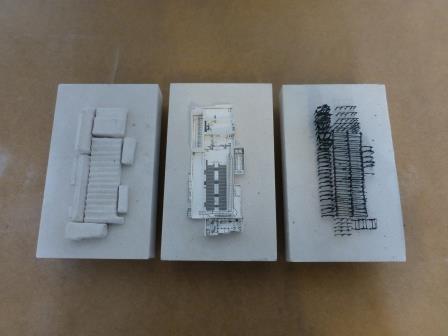
Scale 1:1 000 - The first readings of the chosen building volume
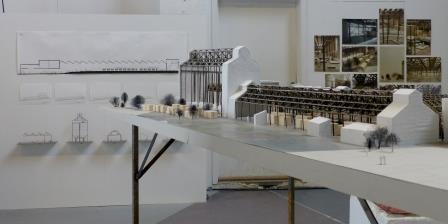
Scale 1:100 - Main model of SMELTAREN
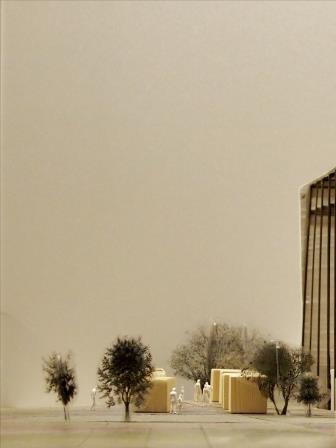
Scale 1:100 - Main model showing the outdoor marked space
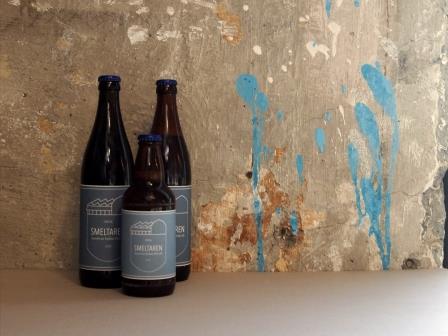
Scale 1:1 - My own home brewed beer representing the new industry inside the building volume, a brewery called SMELTAREN.
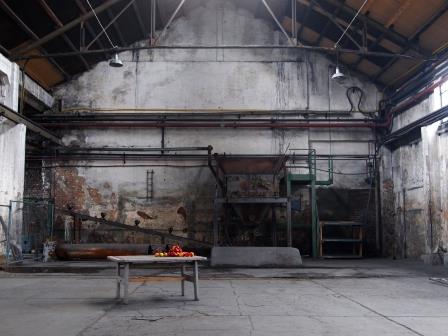
1:1 sketch from study trip - Finding the new programs, in this case the food market
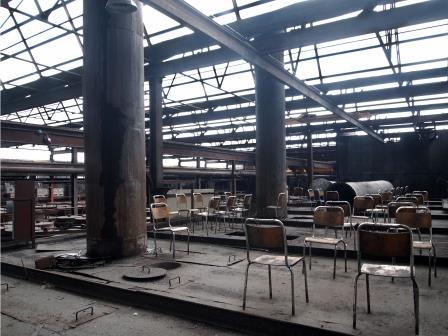
1:1 sketch from study trip - Finding the new programs, in this case the restaurant placement
